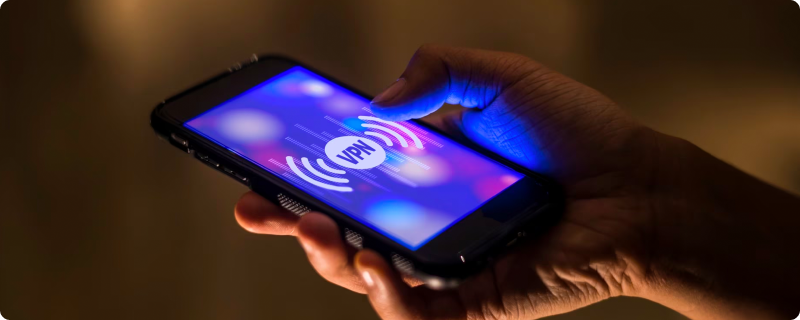Introduction
In our interconnected world, accessing free Wi-Fi has become a crucial skill. Whether you’re on a smartphone or a laptop, knowing how to find and safely use complimentary internet access is vital. This guide offers practical strategies to locate free Wi-Fi networks while ensuring your data remains protected, allowing you to stay connected without jeopardizing your security.
The Urgency for Free Wi-Fi
Have you ever been in dire need of Wi-Fi on the go? Whether you’re traveling abroad or out of mobile data, losing internet access can be frustrating. This article reveals some easy, legal techniques to connect to Wi-Fi from virtually any location, along with essential tips to safeguard your data against potential threats on public networks.
Strategy 1: Seek Out Public Wi-Fi Hotspots
Though it might seem straightforward, locating public Wi-Fi hotspots is highly effective. Numerous venues offer free internet access, such as:
- Fitness centers
- Museums
- Libraries
- Public plazas
- Hotels and hostels
- Universities and colleges
- Public transportation hubs (trains, buses, and stations)
- Cafes and restaurants
Strategy 2: Turn Your Phone into a Wi-Fi Hotspot
When you need to get online using a laptop or tablet, use your phone’s mobile data to create a Wi-Fi hotspot. This method is especially useful if a friend can share their data. While not suited for data-intensive activities, it’s perfect for tasks like sending emails or conducting quick searches.
Steps for iOS:
- Navigate to Settings > Personal Hotspot.
- Enable Allow Others to Join.
- Follow on-screen instructions to connect via Wi-Fi, Bluetooth, or USB.
Steps for Android:
- Go to Settings > Wi-Fi & Network.
- Choose Hotspot & Tethering > Wi-Fi Hotspot.
- Set a strong, unique password and activate the hotspot.
Strategy 3: Leverage Wi-Fi Finder Apps
Several apps can help you uncover free Wi-Fi hotspots by providing login credentials. These apps often rely on user contributions, allowing individuals to add and review network details. Recommended Wi-Fi apps include:
- Wi-Fi Map
- Covers 100 million networks in over 200 countries.
- Features offline maps and data-saving tools.
- Available on Android and iOS.
- Instabridge
- Offers automatic connection for seamless access.
- Features over 10 million networks.
- Available on Android and iOS.
- Wi-Fi Finder
- Lists verified hotspots for reliable access.
- Operates offline.
- Available on Android and iOS.
- Wiman Free WiFi
- Includes 120 million hotspots across 150 countries.
- User reviews help pinpoint reliable networks.
- Available on Android.
- Wi-Fi Free Spot
- A directory of U.S. public Wi-Fi locations, searchable by state and city.
- Accessible online (initial internet connection required).
Strategy 4: Invest in a Portable Router
For a more secure and reliable connection than public hotspots, consider a portable router. These devices use 3G or 4G networks to provide internet access, accommodating multiple simultaneous connections. They are a valuable investment, particularly when traveling to areas with limited Wi-Fi availability.
Understanding the Risks of Public Wi-Fi
While public Wi-Fi is convenient, it comes with significant risks. These networks often lack robust security, allowing cybercriminals to intercept your data. Even password-protected networks aren’t foolproof, as dedicated tools can still monitor traffic. Additionally, rogue Wi-Fi networks can deceive users and steal their data.
Enhancing Security on Public Wi-Fi
To maintain your security on public Wi-Fi, consider these best practices:
- Verify Network Legitimacy: Confirm the official network name with the provider to avoid fake networks.
- Utilize a VPN: VPNs encrypt your data, thwarting hackers. Notable options include NordVPN, Surfshark, and ExpressVPN.
- Avoid Sensitive Transactions: Refrain from accessing financial accounts or entering sensitive information on public Wi-Fi.
- Use HTTPS: Ensure websites are secured with HTTPS or use extensions like HTTPS Everywhere.
- Disable Auto-Connect: Turn off auto-connect for networks and ensure file sharing is off.
- Employ Security Software: Keep your device protected with up-to-date anti-malware programs.
- Log Out and Forget Networks: After using Wi-Fi, log out from all accounts and forget the network.
Conclusion: Connect Responsibly
Staying connected is essential, and free Wi-Fi hotspots are abundantly available. However, it’s crucial to remain aware of the associated risks. By following these precautions, you can enjoy free Wi-Fi without compromising your data or privacy. Stay informed, stay safe, and share this knowledge with others!




